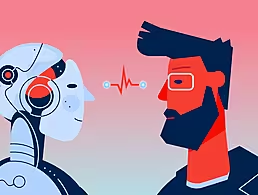Justin Gallagher’s product team at Trello has a lot of remote workers. This is how he ensures the team still works well together.
Trello was a lot smaller when Justin Gallagher, head of product management for the company, first started. Gallagher began working at Fog Creek Software, now called Glitch, in 2010, but six months later he became one of two people to work on the initial development of Trello.
“I was actually a designer to start and I was working on the design of our mobile apps,” Gallagher explains, though he also notes that he has a background in computer science and engineering. This background came in handy when the freelancer they hired to write the code for Trello’s first iteration “disappeared” and Gallagher stepped in.
They created an online list-making application that was launched in 2011. Since then, the product has grown significantly, spinning out from Fog Creek to create a separate software company, with the team increasing from two to 200.
Gallagher’s role now means that he’s always very up close and personal with Trello’s users and the problems the application is trying to solve for them, namely the challenge of keeping people productive and engaged.
Remote working has increased in popularity in recent years. Technology has made working from home or working from satellite offices a lot easier than it once was, and employers know that their staff tend to appreciate being provided with that kind of flexibility.
Yet it undeniably presents its own unique set of challenges, as Gallagher, whose product team includes many unique workers, concedes. Collaboration and bonding are undoubtedly easier in person, which may make an employer prioritise hiring for on-site workers as opposed to remote ones.
“That said, if the remote person has more relevant experience or the better skills, I would rather have that person. And if you put things in place, as we have done, to get those contributions from the remote people to make them feel included, you can still get really excellent contributions from those people. I don’t think there’s a loss there.”
One such measure is changing up how meetings are run when remote workers are involved. Instead of potentially side-lining an employee by having them languish in the background on speakerphone while the conversation goes on between on-site employees, have everyone dial in.
“We found that that just really equalises participation in the meeting. You just get better contributions from everyone involved,” Gallagher says.
Having remote workers necessitates that managers be “a bit more intentional” with how relationships are formed, he adds, in order to assure that co-located and remote workers cohere effectively.
Gallagher worries that co-located employees can have a relationship with remote workers that is “kind of transactional as opposed to a social” when these workers are only communicating when one of the people needs something. Co-located workers will have more opportunities to have conversation flow naturally and develop deeper relationships, which makes it easier to work together.
Trello’s product management team has implemented what it calls a “PM happy hour”, which doesn’t involve alcohol but does give people a chance to gather and spend time talking about non-work-related things. It’s optional, so people who are busy can just skip it, but Gallagher finds that people do come and they enjoy the opportunity to take a break and get to know their peers.
“When you build up empathy with somebody and understand them better, you have more trust with that person”.




